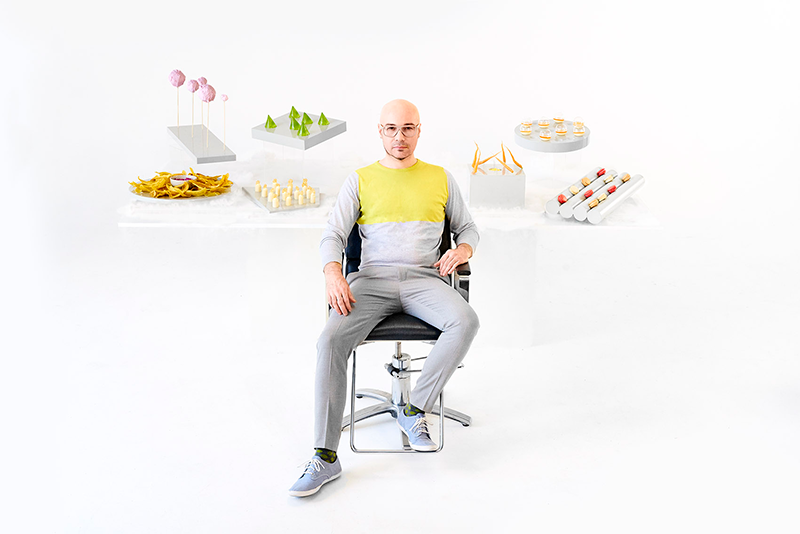Architectural jellies

Professor Stephen Gage of UCL Bartlett School of Architecture has some theories on why architectural jellies are quite so appealing. In his words: “As babies, we first learn about our world by touching it and putting bits of it in our mouth. Part of our subconscious appreciation of shape may well be a dim memory of how it might feel in our mouth. Thus a dome is round and coolly satisfying, while a pointed building is like a sharp and dangerous knife. Jelly architecture returns architecture to the mouth, where we can once again taste it.” This perspective creates an interesting discussion. Though at first glance, jelly architecture can seem strange or even ridiculous, does it actually touch something within us at a childhood or even primal level?

Wolfe has always been fascinated by time and place and his work often reflects this. From his pieces recreating the sphere stones of the Diquís Delta to his surrealist seascape inspired by the work of Derek Jarman, he has used his food art as a way to recall different times and different places. Art often relies only on the viewers’ visual sense but Wolfe’s work encompasses smell, taste as well as visual beauty to evoke emotions and a sense of times gone by.
His experience and fluency in surrealism means Wolfe is perfectly poised to create incredible architectural feats with jelly.
Jelly is a unique medium to explore the world around us. The material is constantly in flux, constantly moving yet mouldable and easy to shape. This tension creates an exciting base from which to work. Of course, it is impossible to ignore jelly’s propensity to take even the oldest in the room directly back to their childhood. This contrast between the often-oppressive architecture and infrastructure that constantly surrounds us and the playful, childish material used to illustrate it creates work that is stunning, shocking and fun in equal measures.
Wolfe is passionate about food design with the ability to push and pull the viewer to a variety of feelings, locations and moments. This passion is part of the reason he was recently awarded the number two spot in Architectural Digest for Innovative Food Design. By embracing a wide range of inspiration sources from the traditional to the more obscure and even the unexpected, Wolfe allows his audience the opportunities to experience something that is truly different.

